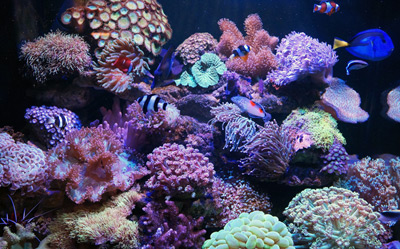If someone were to ask you (perhaps with a gun held to your head, as is so often the case in these hypothetical scenarios) to identify the one thing that no aspiring marine aquarist should be without, what would your answer be? A top-of-the-line protein skimmer? The best synthetic sea salt mix on the market? An exceptional water-flow scheme? A high-tech controller to monitor and maintain proper water parameters?
While state-of-the-art gear helps make a successful marine aquarium more attainable to the average person, the most important tool for any hobbyist is something you can’t buy at your LFS or on the internet. Rather, it’s a personality trait that you’re either born with or must learn to practice: patience. In fact, absent the virtue of patience, an aspiring hobbyist’s endeavors are doomed to fail despite all the latest, greatest gadgetry.
Patience is a marine aquarist’s greatest ally, not just in the planning-and-research stage and during initial setup and cycling, but throughout the entire life of the system. Here’s just a sampling of situations in which patience is paramount for hobbyists:
Quarantining new specimens
With all our emphasis on quarantine here at Saltwater Smarts, you knew this one would probably lead the way, but as far as I’m concerned, the importance of quarantining new specimens cannot be overstated.
I know it’s really hard to resist putting that newly acquired fish or coral right into your display tank so you can enjoy it in all its splendor, but trust me when I say, that way lies madness! When it comes to being impatient and skipping quarantine, I’ve been there, done that, and suffered through the subsequent disease outbreak.
If you pledge with me now that you’ll never skip this vital step, “Caribbean Chris” will happily show up at your home dressed as Carmen Miranda and Riverdance for you! (I’d come and do my famous clog dance, but I seem to have misplaced my lederhosen.)
Reversing algae outbreaks
When irksome hair algae, bubble algae, or cyanobacteria rears its ugly head, we want it gone quickly and may be tempted to take ill-advised measures to eradicate it, such as “flooding the zone” with snails and hermit crabs, introducing a herbivorous fish to an already overstocked tank, or dosing the system with antibiotics (in the case of cyano). But algae outbreaks don’t happen overnight, and they won’t be reversed that quickly either.
Remember, nuisance algae forms tend to be highly opportunistic and challenging to eradicate once they gain a foothold. It can take months of stepped-up water changes, hand picking, improved protein skimming, chemical filtration, etc. to bring an outbreak under control. Reversing an algae outbreak is a lot like turning an aircraft carrier—you can’t do it “on a dime.”
Rectifying drifting water parameters
The aircraft carrier metaphor can also apply to any aspect of water chemistry that has drifted away from the desired level. Bringing it back in line is never a simple matter of dumping in X amount (“Ah, X amount! That’s very good, isn’t it?”) of this or that supplement and getting instant results. You have to make small, judicious corrections over time to prevent precipitous swings and to avoid throwing other parameters out of balance—e.g., causing your calcium level to crash by adding too much buffer to increase alkalinity.
Achieving that brimming reef look
Aesthetically speaking, there can be a pretty significant disconnect between a relatively bare new reef system and a long-established one that is just brimming with a variety of colorful corals. But there’s no good shortcut from the former to the latter. Only good husbandry and the passage of time can get you from point A to point B.
Impatient new reefers may try to “shortcircuit” this process by packing a larger number of specimens closer together. While this may create a visually pleasing “coral garden” effect in the near term, once the corals start to increase in size, the long-term result will be an unsightly mess with specimens/colonies battling for the limited real estate—stinging, overgrowing, or overtopping their neighbors in the process.
What’s your scenario?
As I mentioned, these are just a few of the situations demanding patience on the part of marine aquarists. If you can think of others I haven’t included here, please share them with your fellow salties in the comment section below.



